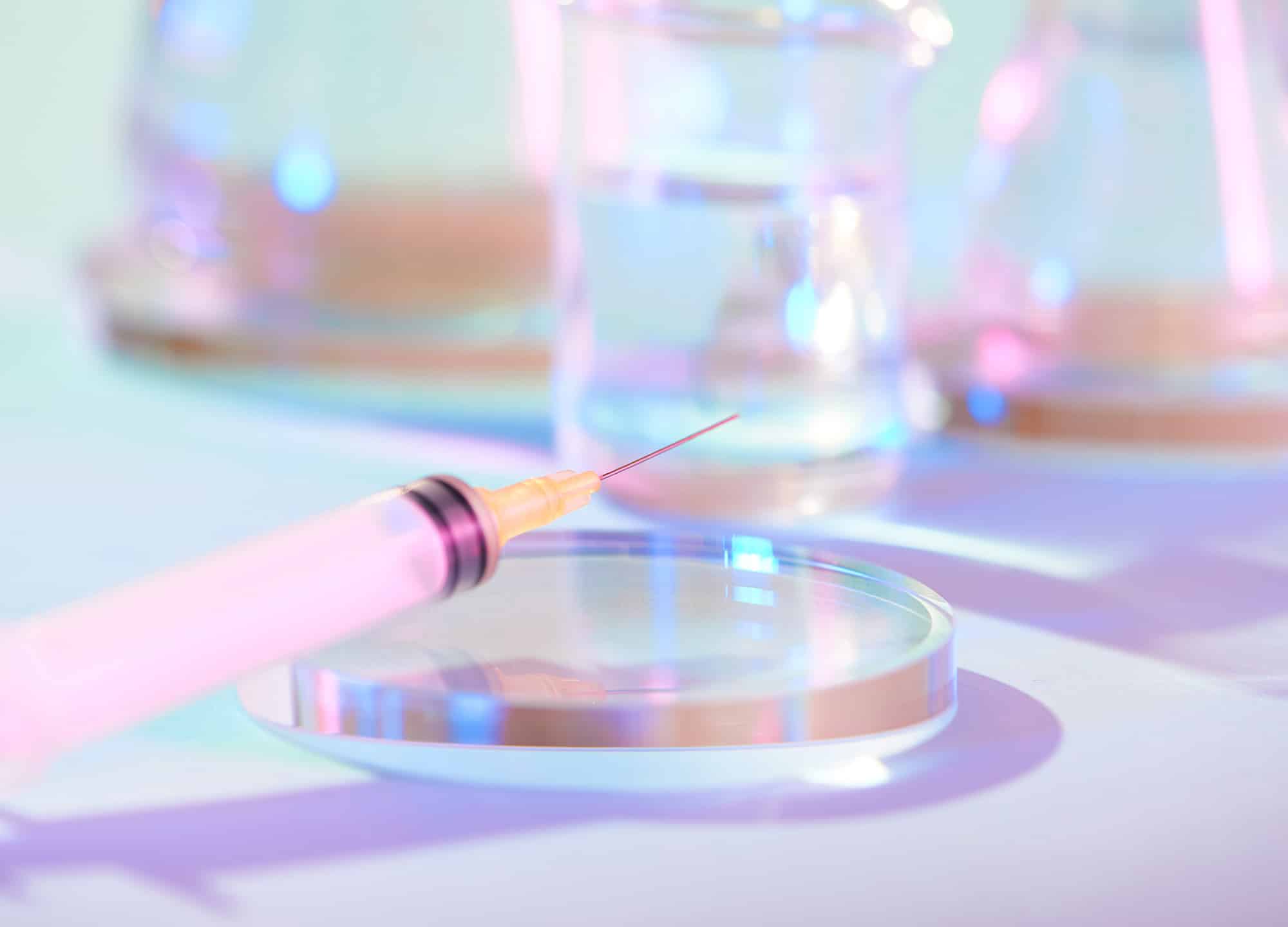Injectables news usually arrives in the form of freshly approved products—a lip filler promising softer, juicier fullness or a “cleaner” collection of gels made to move more naturally. Such events generally spark celebratory posts from injectors across social media, eager to TikTok a product’s finer points or share an inaugural unboxing in their Stories. But lately, we’ve noticed a shift in content, with providers building buzz around specific filler techniques rather than novel formulas. We asked top doctors to break down the most hashtagged methods—tenting, ferning, blending—for everything you need to know before submitting to the syringe.
Lip tenting or fencing
When tenting the lips, injectors use an ultrafine-gauge needle to place a series of tiny pillars of hyaluronic acid (HA) gel—à la tent poles or fence posts—along the lips’ outer edges. Starting at the corners of the mouth and working toward the Cupid’s bow, they position the needle on the vermilion border and insert it into the body of the lip, filling just beneath the skin’s surface. “As you withdraw the needle, you inject a small column of filler, which causes an eversion [or turning out] of the lip and creates a very distinct border,” says Dr. Steven Weiner, a board-certified facial plastic surgeon in Santa Rosa Beach, Florida. The same process can be repeated on the lower lip.
This maneuver tends to give “more enhancement per cc [of product] than you’d get using a standard fanning technique,” he adds, likely because of the support it lends the lip line. To get that pert, crisp look, structural fillers, like classic Restylane or Restylane Kysse, are typically used for tenting, whereas softer, more spreadable, water-binding formulas are avoided.
Dr. Kay Durairaj, a board-certified facial plastic surgeon in Pasadena, California, relies on the tenting technique when sharpening the Cupid’s bow but also loves it “for highlighting a philtrum—those two little lines that come down from the nose to the top lip—as it really accentuates, youthfully, the appearance of the upper lip,” she says.
Proper product selection and delivery are key to skirting complications like lumps, grooves, and “the superficial spread of filler outside the border of the lip, which can give a filler-mustache effect,” notes Dr. Durairaj.
Ferning (aka the fern pattern)
Developed by Dr. Tom Van Eijk, a cosmetic surgeon in Amsterdam, ferning aims to erase etched-in lines by strengthening the skin with miniscule droplets of filler deposited superficially in the dermis. It’s commonly used for smile and marionette lines around the mouth, radial cheek lines, glabellar lines between the brows, and the barcode-like lines above the lips, with the goal of minimizing wrinkles without adding bulk or puffiness. “It’s called a fern because you start your injection in the middle of the wrinkle and you move laterally, perpendicular to the wrinkle, injecting most of the product as you’re coming out of the wrinkle,” says Dr. Weiner.
For the classic pattern, “you inject on one side [of the wrinkle], and then you have to go the opposite direction, to create the full fern effect,” he adds. Injectors will sometimes modify their approach when treating the smile lines, addressing only the side of the wrinkle closer to the mouth, he notes, so as not to add weight to an already pronounced nasolabial fold.
Like tenting, ferning is an advanced technique that “requires a lot of needle sticks and can sometimes lead to significant bruising,” says Dr. Durairaj. It’s also not for everyone, she adds, explaining that certain thin-skinned patients may benefit more from a dermis-thickening biostimulator like Sculptra: “The new collagen you can create is going to give that robust framework back to the skin so you can start to reverse those aging changes organically.”
Blending and diluting
Fillers ordinarily come in ready-to-serve syringes, sealed in sterile pouches. But it’s not unusual for injectors to finesse a standard-issue formula to achieve a more nuanced outcome. According to a 2019 survey published in the journal Dermatologic Surgery, more than one-third of dermatologists mix fillers with other solutions, like saline and/or numbing lidocaine, before injection—either to adjust the products’ thickness or help with pain and swelling.
“Injectors typically ‘blend’ fillers to get the exact consistency they are looking for,” says Dr. Annie Chiu, a board-certified dermatologist in Redondo Beach, California. When treating necklace lines, for instance—the horizontal creases spanning the neck—providers may “blend down the thickness of an existing filler, to get a little better spread into that area,” she explains, and better serve these “really fine wrinkles on very thin skin.”
Likewise, Dr. Weiner routinely dilutes or hyperdilutes (with a greater dose of lidocaine or saline) Radiesse when trying to boost collagen and elastin stimulation, to thicken skin and spur tightening—particularly in the neck and on body parts, like the knees, that can get bunchy with age.
When tackling tear troughs, he may mix Restylane with a small amount of saline, for an altogether different purpose. “We call it prehydrating,” he says. “Most of the swelling patients get after HA injections is related to the product absorbing water from the body. But if you prehydrate it [with saline], you’re going to minimize swelling after the procedure, because the gel is already hydrated.” Thinning the gel also encourages an easy and even distribution.
“The beauty of blending,” says Dr. Durairaj, “is that you can really customize a product for the skin you’re treating.” She’ll often “combine a thinner filler with a thicker one, to get a more medium-density gel,” she says. She also likes to cocktail HAs and biostimulators, either Sculptra or Radiesse—especially when contouring the buttocks—to deliver longer-lasting results.
Not every injector is a fan of marrying injectables, however. “In order to blend fillers, you have to use a connector between the two products and push them back and forth between two syringes,” Dr. Chiu explains. “I prefer not to mess with the integrity of the filler, because I’m concerned that with a lot of agitation, I could change the crosslinks of the HAs and alter their duration or other properties. This doesn’t mean I never do it or that it’s wrong to do—it’s just my personal viewpoint and why I try to avoid blending.”
While there’s very little published data behind filler compounding, in Dr. Durairaj’s clinical experience, blending can deliver “a great synergistic effect and should be relatively safe, provided you’re seeing an experienced injector [who has] good knowledge of the products and excellent sterility techniques,” she says.











